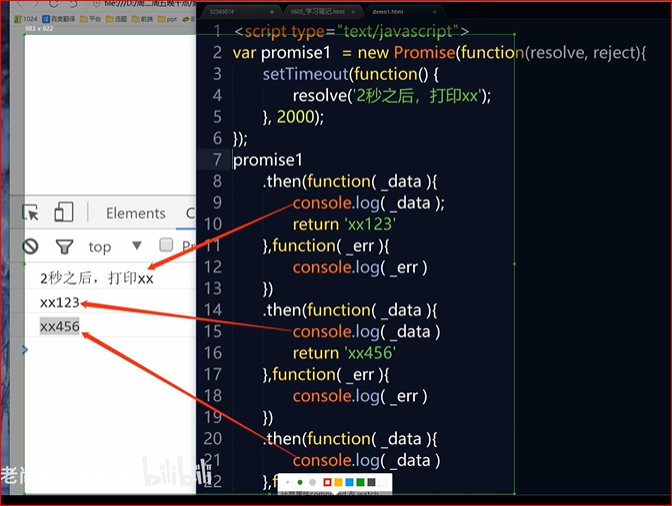promise对象调试
<!DOCTYPE html>
<html>
<head>
<meta charset="utf-8">
<title></title>
</head>
<body>
<script type="text/javascript">
const p1 = new Promise(function (resolve, reject) {
setTimeout(() => resolve("test"), 2000)
})
const p2 = new Promise(function (resolve, reject) {
//经过调试发现,resolve的内容和状态能被传入的promise实例覆盖,如果是reject则不能被覆盖。
setTimeout(() => reject(p1), 3000)
})
console.log(p1);
console.log(p2);
p2
.then(function(result) {
console.log(result);
return "chenyujie";})
.catch(function(error ) {
console.log("testsss");
console.log(error);
return p2;})
.then(function(result) {
console.log(result);
console.log(this);},
function(error){
console.log("zhongguo");
console.log(error);
})
// .catch(result => {
// console.log(result);
// })
</script>
</body>
</html>
then函数返回一个promise对象,promise对象有两个基本属性,状态和结果,其中then回调函数的返回值如果是字符串则直接为结果,状态为fulfilled,如果返回值为promise对象,则以对象状态和结果为准。(具体情况可以调试看,不一定准确,该对象有点麻烦)

var XMLHttpRequest = require('xmlhttprequest').XMLHttpRequest; const getJSON = function(url) { const promise = new Promise(function(resolve, reject){ const handler = function() { if (this.readyState !== 4) { return; } // console.log(this); if (this.status === 200) { console.log(this.responseType) resolve(this.responseType); } else { console.log(this.status) console.log("-------------"+this.statusText+"----------------") reject(new Error(this.statusText)); } }; const client = new XMLHttpRequest(); //client.open("GET", url, false); //第三个参数设置为false,使得函数执行为同步操作 client.open("GET", url); client.onreadystatechange = handler; client.responseType = "html"; client.setRequestHeader("Accept", "text/html"); console.log("test1") client.send(); console.log("test2") }); return promise; }; //getJSON("https://www.baidu.com/wang") getJSON("https://www.baidu.com/wang").then(function(json) { console.log('Contents: ' + json); }, function(error) { console.log('出错了', error); });
作者:小德cyj
出处:http://www.cnblogs.com/dongzhuangdian
欢迎转载,希望注明出处



 浙公网安备 33010602011771号
浙公网安备 33010602011771号